Black Water Ate the Whole City – The Great East Japan Earthquake and How a Man in His 40s Cleverness Saved Him From This Catastrophe

March 11 marked the 12th anniversary of the Great East Japan Earthquake.
However, the passing of time has not erased the memories of many people. The earthquake, which registered a magnitude of 9.0 on the Richter scale, the largest in Japan’s recorded history, struck the Tohoku region and other parts of Japan. Including earthquake-related deaths, more than 20,000 people died or are missing.
“FRIDAY” has been in the affected areas immediately after the earthquake and has reported on the graphic damage. But it was not all horrific. Some people even survived the disaster. Following Part I: A couple in their 70s who survived the massive tsunami, we would like to look back at the reality of the earthquake and tsunami from the article that appeared in the April 1, 2011 issue (content has been partially revised).
Immediately after the earthquake, there were about 1,000 victims at Daiichi Junior High School in Rikuzentakata City, Iwate Prefecture. Mr. B, a man in his 40s at the time who ran a packaging materials company in the city, was one of them. The following is a description of the horror of the oncoming giant tsunami as recounted by Mr. B. “That horrifying scene was something I will never forget.”
I will never forget that horrific scene. Immediately after the announcement from City Hall that a tsunami was approaching, I looked out from the second floor of my three-story office building and saw black water pouring down from the ground at a furious pace.
I rushed up to the rooftop. Looking around from the rooftop, I saw that the entire area was covered with pitch black water flowing lumber and garbage. With an eerie “go-go-go” sound, the water continued to rise and close in on the rooftop.
Is everyone dead?
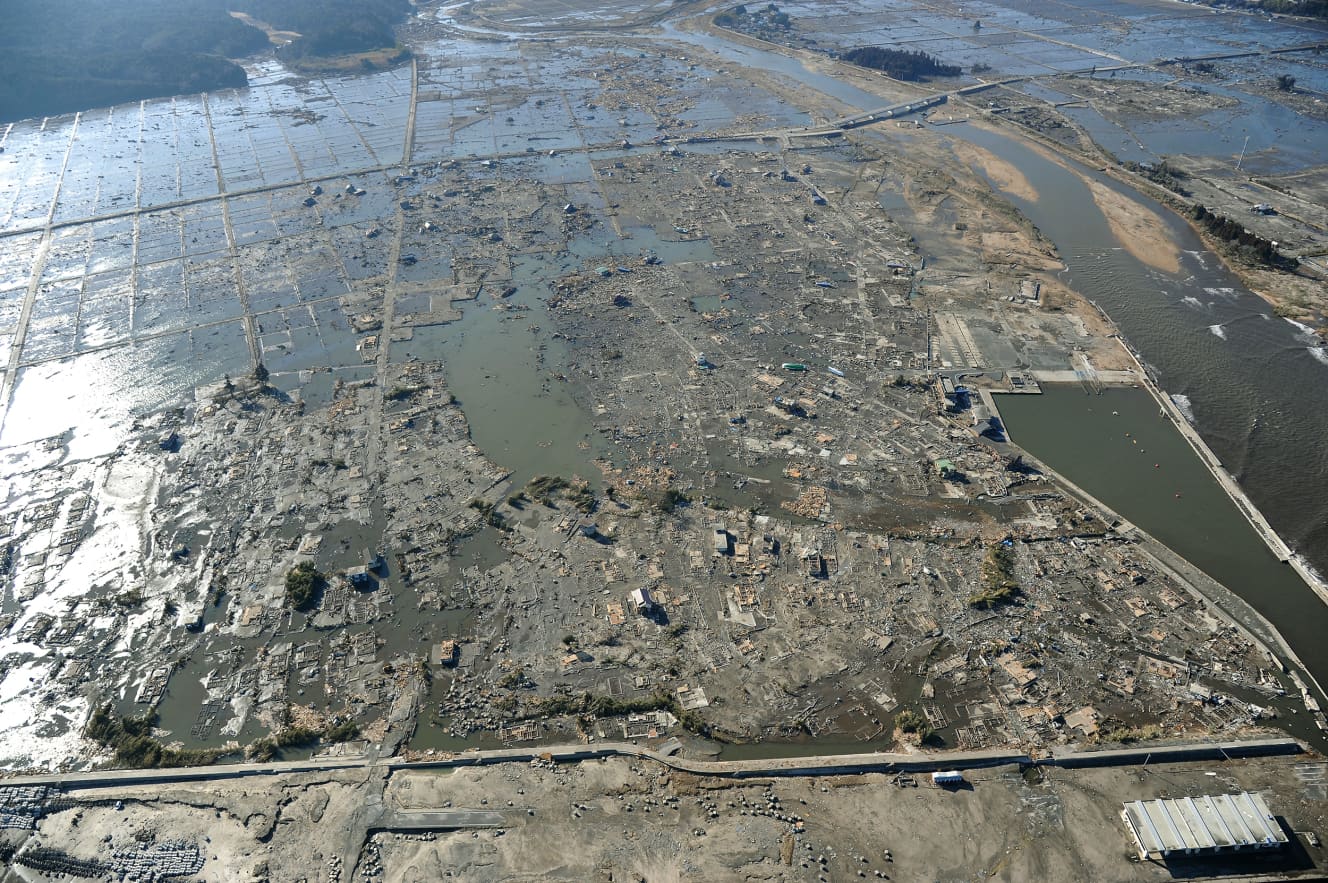
The scene was so horrific that Mr. B had no time to think.
“All I could feel was fear at the intensity of the muddy waters,” he said. I quickly went up to the water storage tank, which was set up above the door on the rooftop. I quickly climbed up the ladder and looked down in horror. The tsunami had engulfed the entire building, and the surface of the water was right below my feet. If I had climbed the ladder ten seconds later, I would have been swept away by the muddy water.
When he looked around, he was even more shocked.
“I could see nothing but black water for 360 degrees,” he said. All the buildings were under water. Even the civic center, which had been designated as an evacuation center, was completely under water. I thought, ‘Is everyone dead?'”
The water level stopped rising just in time, but it did not recede. Snow began to fall and it became unbearably cold. As night fell, the water level finally dropped, and Mr. B climbed down the ladder.
When I opened the door to the downstairs, I found a plastic garbage bag. I put five or six garbage bags on top of each other, and I managed to get out of the cold by sticking my neck out through the torn pieces. I dozed off several times, but the sound of rushing water and aftershocks soon woke me up.
At dawn, I finally heard the sound of a helicopter. I wrote ‘SOS’ on the sludge that had accumulated on the rooftop with driftwood. Around noon, members of the Self-Defense Forces descend from the helicopter and I am rescued. All I could see from the helicopter window was the wreckage of broken buildings dotting the water.”
Mr. B’s wife and children were safe, but his parents and younger brother were unaccounted for. At the end of the interview at the evacuation center, Mr. B said stoutly, “I don’t want to be depressed all the time,” he said.
I can’t stay in a state of depression all the time. The survivors will join forces. We will do our best to revive the town.
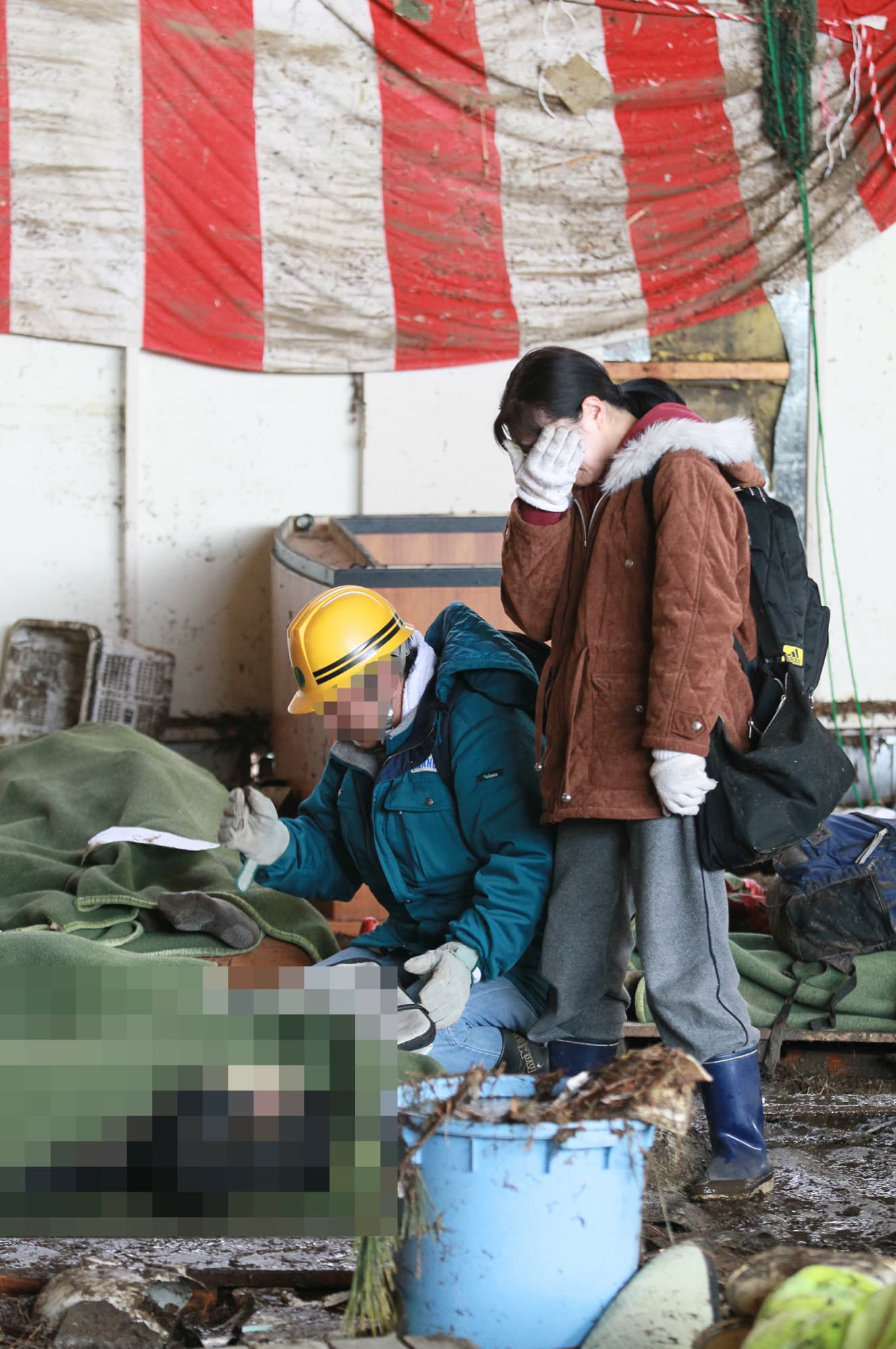
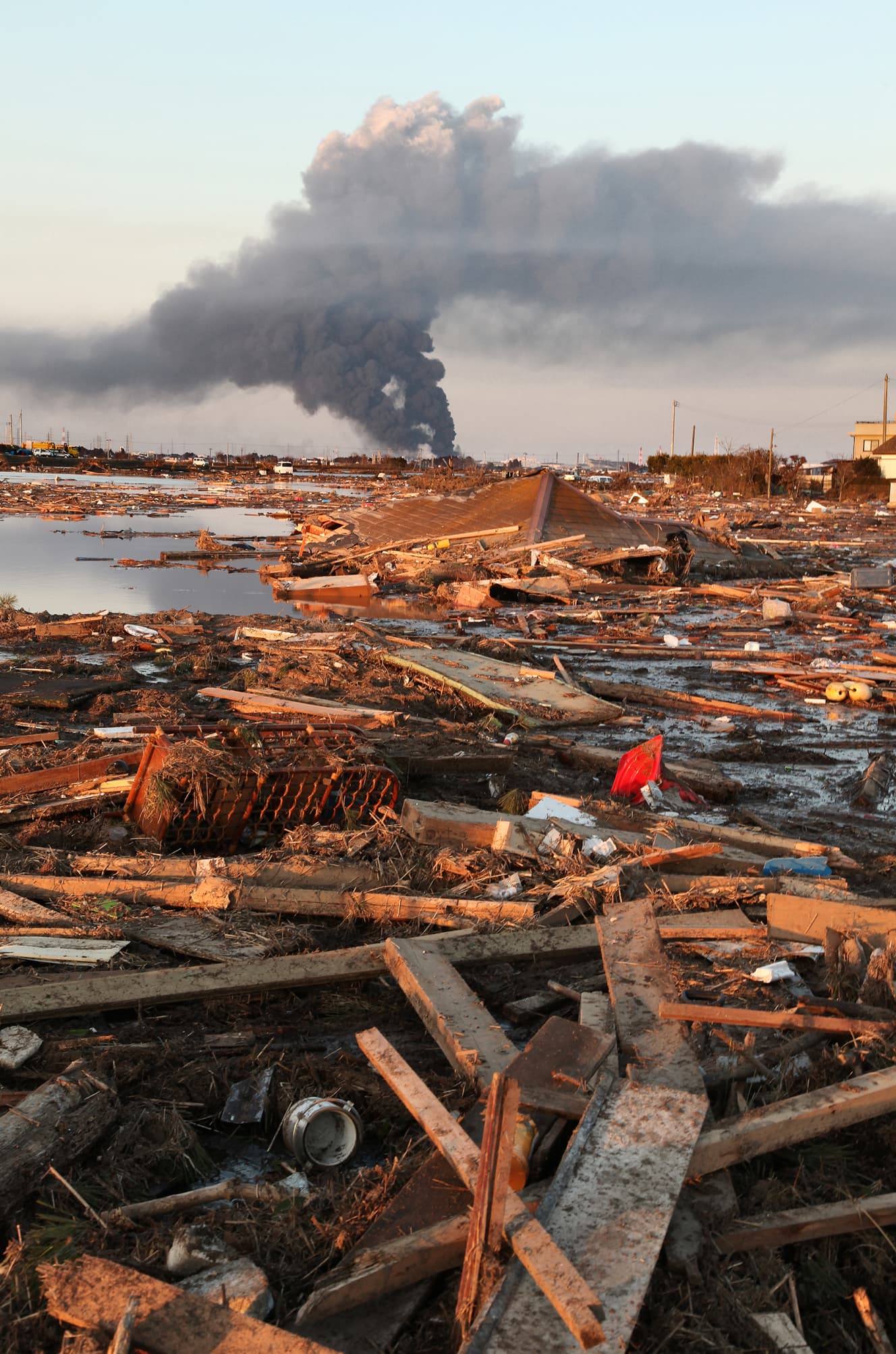
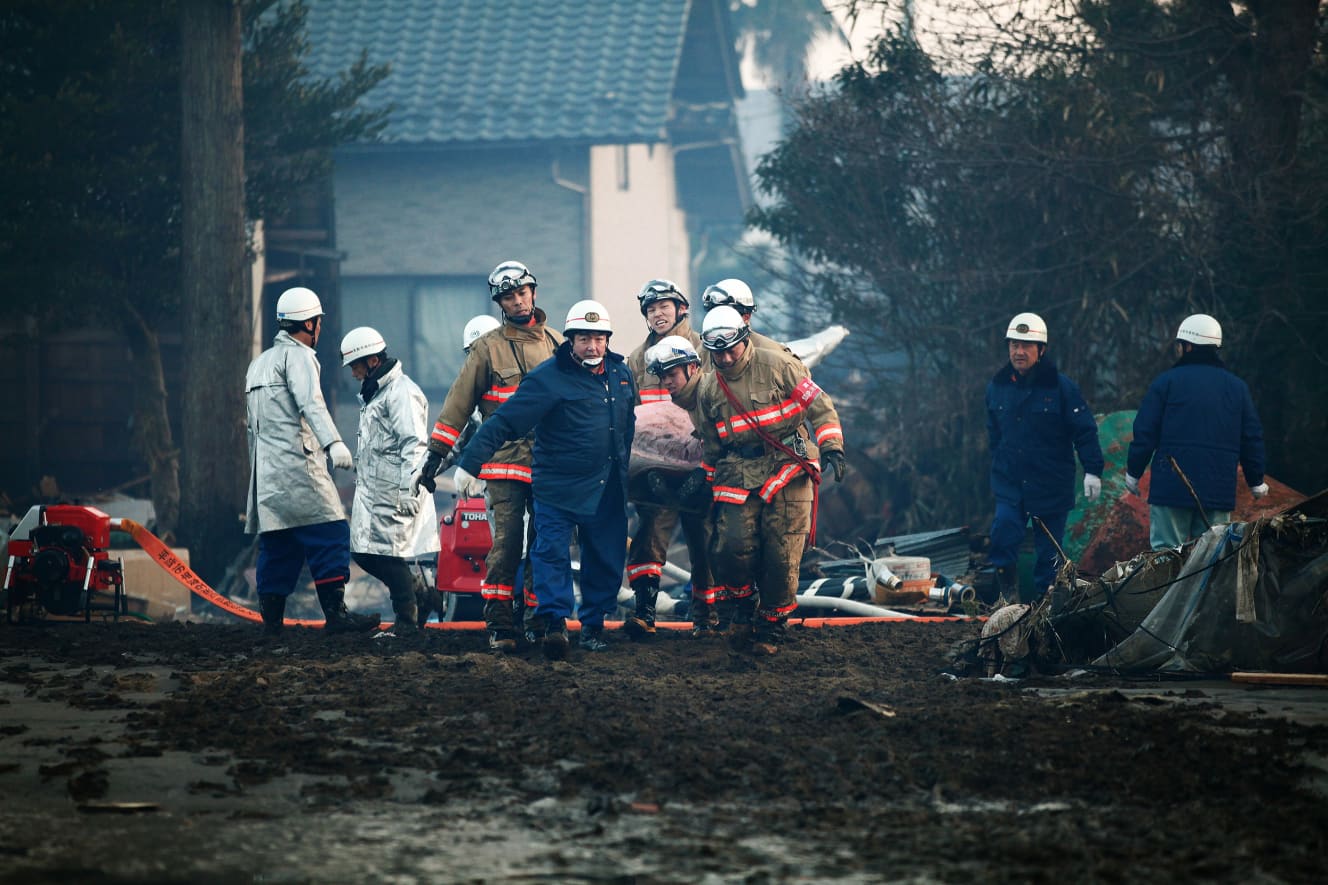
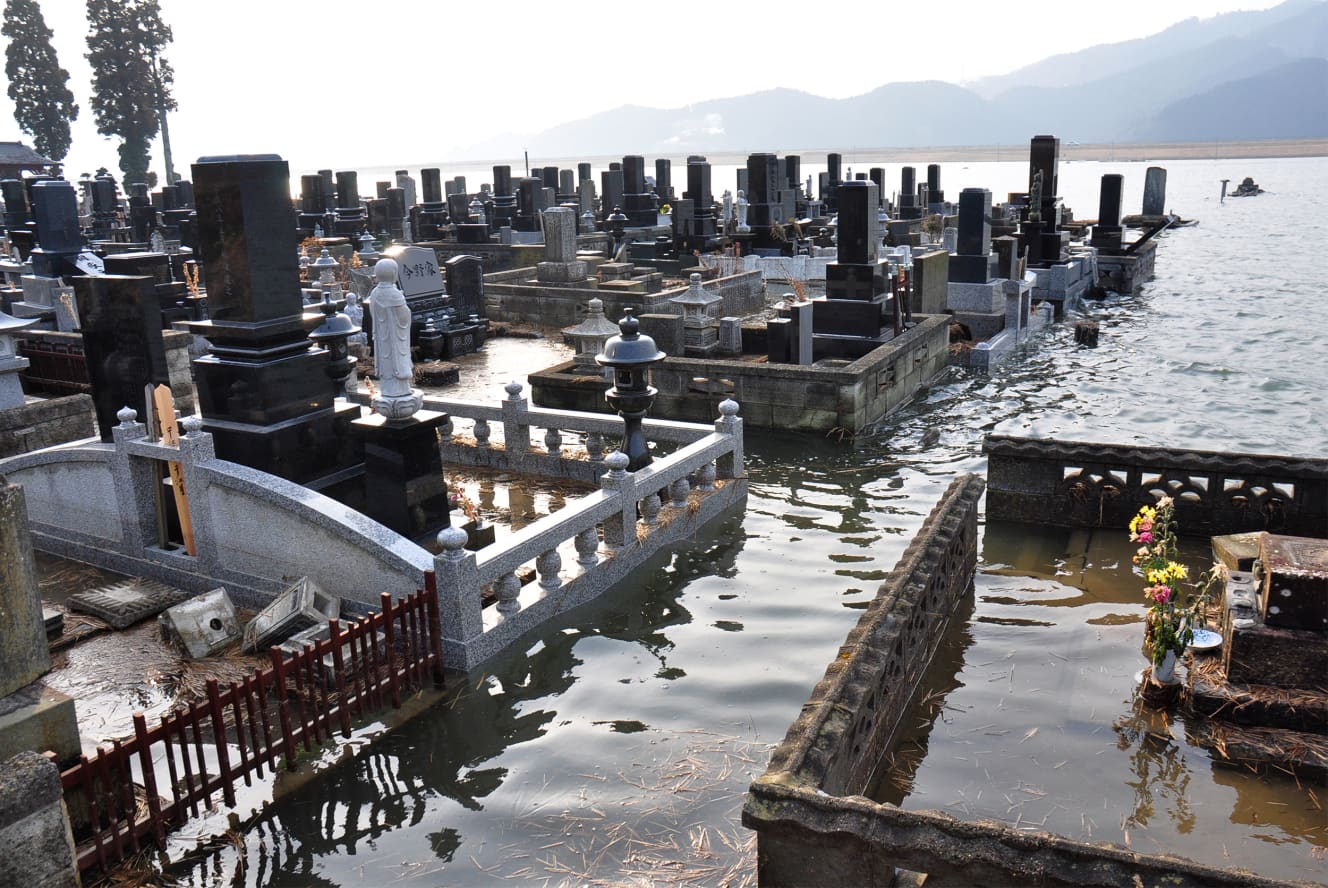



PHOTO: Soichiro Koriyama Takehiko Kohiyama Takehiko Yuzoku Takehiro Kota Junpei Kawayanagi Masahiro Kano Aika Yamada Kojiro Kikuchi Masayuki Kikuchi Kazumitsu Ono